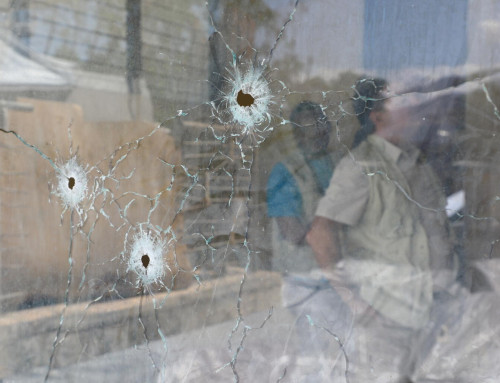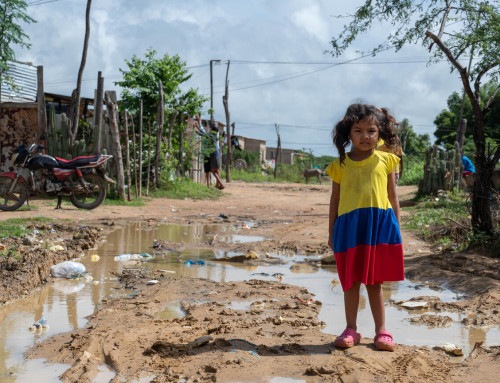Transit Centre No. 1, Yangon: Wearing traditional Myanmar checkered lungyis and starched white shirts with rounded collars, the young people sit down in rows of chairs and wait for further instruction. Most of them sit quietly but some fidget nervously and shift in their seats, craning their necks forward to see how the ceremony is progressing.
They are 80 children and young people, all once recruited and used in the Tatmadaw. It is their final roll call as they prepare to leave the armed forces, discharged on the grounds that they should never have been enlisted in the first place. This is the eighth round of children released since June 2012 when the Government of Myanmar signed an Action Plan with the United Nations to end and prevent the recruitment and use of children in the Tatmadaw.
Kyaw Thu*, 19, is one of the young people being discharged. He was recruited in 2013 when he was 17, yet under the Myanmar Military Act it is illegal to recruit children into the armed forces if they are aged under 18.
An outstanding student, Kyaw Thu had just finished 10th grade with top marks at his school in a remote delta region in Southeast Myanmar. Recruiters had come to his village after the final year high school exams had taken place.
The promise of escaping grinding poverty and being employed with a good salary was appealing to Kyaw Thu. He agreed to visit the cadet facilities in Yangon with his mother when the recruiters suggested he see for himself what was on offer.
“When I saw the training grounds and wanted to leave, they demanded that I had to stay otherwise I would have to pay back the money they had spent to get my mother and I there.”
“My mother and I didn’t have any [money] between us. I had to stay.”
Kyaw Thu’s one year in the navy was difficult. He worked menial jobs cleaning the rust from navy boats. Having never been away from his family before, he missed his parents terribly.
Finally, Kyaw Thu’s egress came via a friend who was previously discharged. His friend passed along a public hotline number to call, where he could inform the United Nations led Country Task Force on Monitoring and Reporting (CTFMR) about his situation.
The public hotline is a crucial tool that will help reach zero recruitment of children in the armed forces and is endorsed by the Tatmadaw. The hotline is operated 24 hours a day to report the recruitment and the use of children in the Tatmadaw including Border Guard Forces.
The Myanmar government has also launched joint mass information campaigns with CTFMR since November 2013 to support the implementation of the Action Plan that aims to prevent and end the recruitment and use of children in the Tatmadaw. Under the agreement, the Tatmadaw committed to identify and discharge all children in their ranks, to strengthen recruitment procedures and to take actions against perpetrators, among other activities for the protection of children.
Kyaw Thu telephoned the hotline in late October 2014. The CTFMR then informed the Myanmar government and after an investigation, he was discharged just over a month after notifying the hotline.
To date, a total of 553 children have been released from the armed forces, with 376 released in 2014.
Aung Thura* said he had no idea what was in store for him when he joined the ranks aged 14, after running away from home.
“Being a cadet soldier was much more difficult than being at home,” he said, speaking softly. His gentle manner seems amiss with the wayward character he describes himself as being.
Aung Thura, now 19, is keen to attend school again but is aware that there has been a massive gap in his adolescence and that he has missed out on crucial years of schooling and on leading a normal childhood.
“It’s a bit embarrassing because I’m so much older now but I do want to attend school so that I can do other things.”
“Also, I want to learn how to drive a car,” he added with a grin.
Aung Thura and the others discharged will receive continuous individual support tailored for their needs from the CTFMR partners, with the support of donors such as the Australian Government, Canadian International Development Agency, European Union, Government of Denmark, Swiss Development Cooperation, the Swiss Committee for UNICEF, and the UN Peace Building Fund.
As they return to normal civilian life, they will receive regular follow-ups from the social workers who initially conducted their case study interviews, with ongoing support provided through local partner NGOs. The CTFMR reintegration support programme offers avenues to return to education, helping to also provide access to the job market though vocational training and mentoring.
Myanmar’s Ministry of Health is also providing support, ensuring that the children and young people have access to health care and medication once they are back in their communities.
Bertrand Bainvel, UNICEF Representative to Myanmar and co-chair of the CTFMR, has praised Myanmar’s government and armed forces for their accelerated efforts toward ending the recruitment and use of children in the armed forces:
“War is no place for a child, and neither is an army. It is important that we all work together to send this practice back where it belongs – in the past.”
*Names have been changed to protect identity
Manny Maung is a freelance journalist and consultant for UNICEF Myanmar.
This story originally appeared on the UNICEF Myanmar blog on 24 November, and can be found here: http://blogs.unicef.org/2014/11/26/376-children-released-from-armed-forces-in-myanmar-in-2014/
Children, Not Soldiers Campaign
Children not Soldiers is a campaign to end the recruitment and use of children in Government armed forces by 2016. Led by Leila Zerrougui, the Special Representative of the Secretary-General for Children and Armed Conflict and UNICEF, the campaign mobilizes global support and financial resources so the seven government armed forces listed in the Secretary General’s annual report on Children and Armed Conflict become, and remain, child-free.






